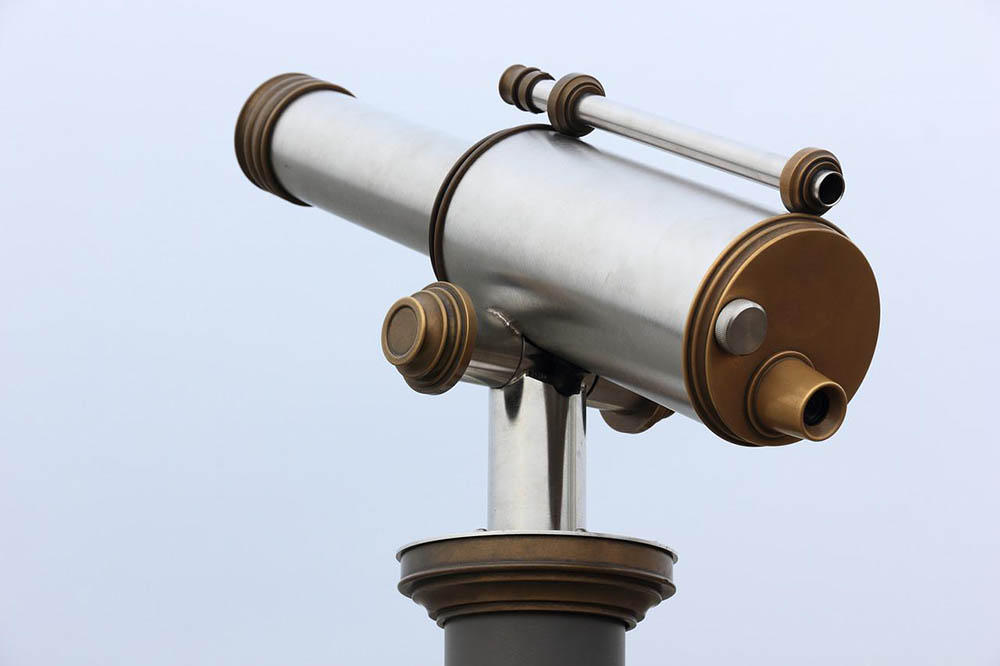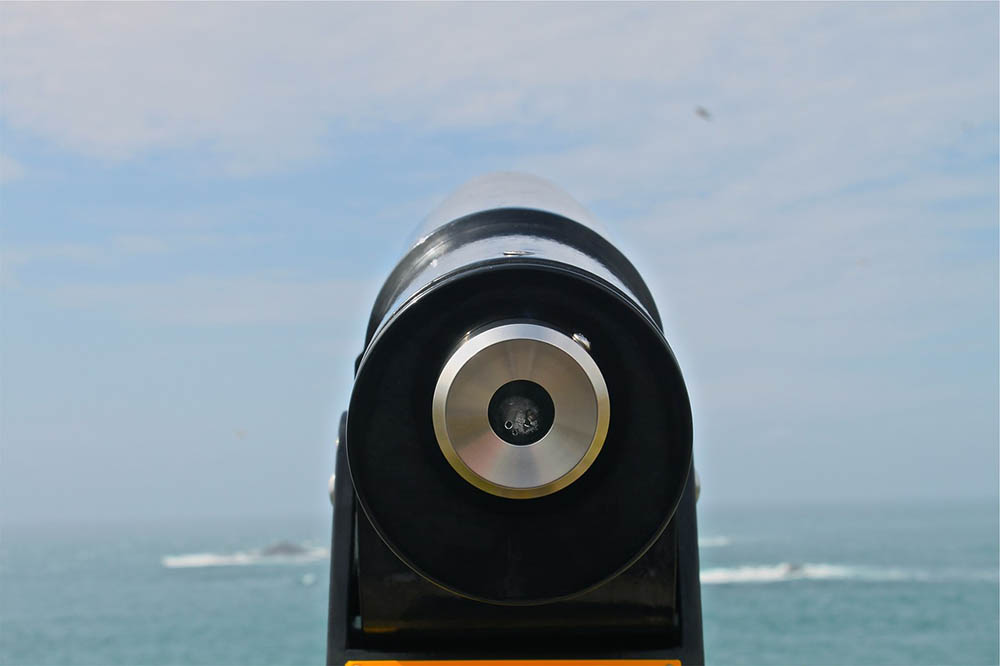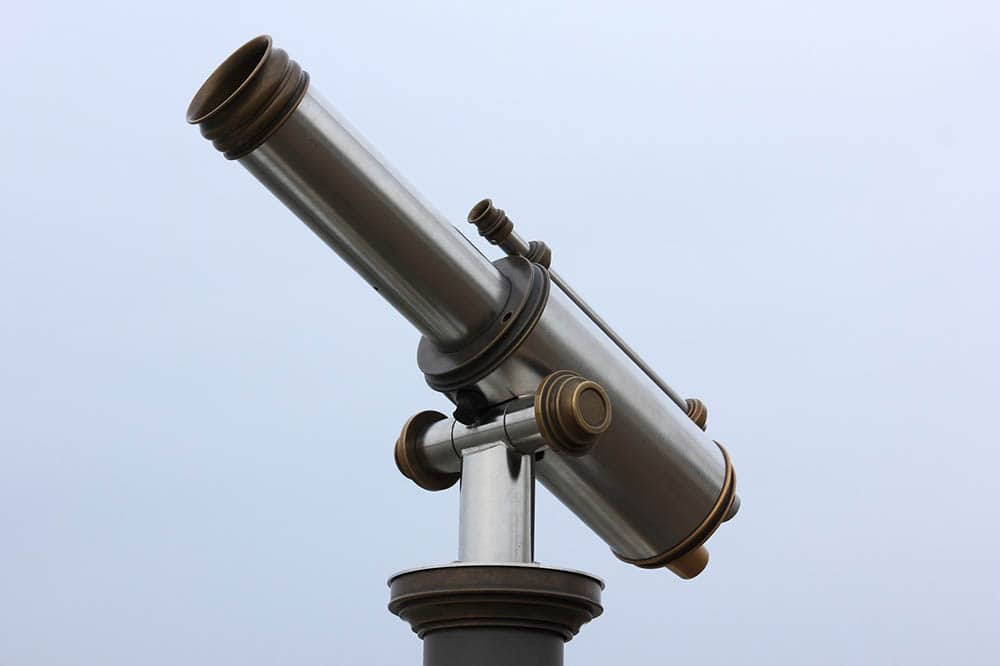How Does a Monocular Work? A Complete Explanation
Last Updated on

We all know that when you hold up a monocular to your eye, it makes an object larger, but what exactly is going on inside that compact device that makes it work that way?
Also, when do you want to use a monocular, and what is it fully capable of? Used correctly, it can unlock a whole world of possibilities!
We break it all down for you here, so you know exactly how it works and if it’s the right choice for your needs.

How Does It Work?
To truly understand how a monocular works, you need to understand what’s going on inside. You can essentially break down a monocular into three different parts: the objective lens, a prism system, and an eyepiece lens.
The objective lens is what brings in the light. It’s the piece farthest from you when using the monocular but closest to the object that you’re looking at.
The next piece is completely inside the monocular, and that’s the prism system. It’s the most complicated part of this device. Most monoculars have two prisms but there’s no rule on this.
The prisms bring the light closer together for a better image, and it corrects the orientation of the image. Without the prisms, everything that you viewed in a monocular would be upside down!
The final component is the one that does all the magnifying: the eyepiece lens. This is the part that you actually look through to see things. It essentially works the same way that a magnifying glass does. It concentrates the light and enables you to focus on parts that you wouldn’t otherwise be able to see.
The smaller the eyepiece lens, the higher the magnification, but you also need to bring in more light to be able to see things with a small eyepiece lens, so you can only go so small without losing the view!

What Are the Different Types of Monoculars?
While the basics of monoculars apply to any type out there, there are tons of different twists that manufacturers add to achieve different results. There are night-vision monoculars, infrared monoculars, thermal imaging monoculars, compact monoculars, and of course, regular monoculars!
Infrared monoculars don’t use light to illuminate objects. Instead, they bring in a different wavelength to illuminate things. Typically, infrared monoculars are comparatively inexpensive, and they can illuminate objects that you otherwise wouldn’t be able to see because of a lack of light.
Thermal imaging monoculars pick up heat signatures and highlight those for you. They can easily pick up animals or people hiding in camouflage, though they are typically expensive.
Night-vision monoculars can possess either infrared or thermal imaging or both. Essentially, infrared and thermal imaging are subsets of night-vision monoculars!
Compact monoculars are just what they sound like. They work exactly like a regular monocular, except they’re much smaller. This makes it easy to tuck one away and take it with you even if you already have a ton of gear.
These additional features provide more functionality to monoculars depending on the situations where you need to use one. If you’re simply trying to spot faraway objects, a regular monocular works just fine. But if you want to spot camouflaged animals, thermal imaging monoculars can give you a significant advantage!
Getting the right monocular depends on what you need and the situations where you want to use it!

Where Is It Used?
The cool thing about monoculars is that they have a wide range of uses. Whether you’re stargazing, birdwatching, hunting, or just exploring, monoculars can be extremely useful.
They enable you to see faraway objects and are easy to transport just about anywhere! Furthermore, with so many variations of monoculars (like night-vision monoculars), they’re highly adaptable to different situations.
For example, law enforcement can use thermal imaging monoculars to safely track down a fugitive trying to escape into a forest or another heavily vegetated area, and a budding backyard astronomer can use one to find planets in the sky!
Anytime that you want a better view of something that’s far away, monoculars can help you out!
Advantages of a Monocular
One of the biggest advantages of a monocular is its compact size and weight. It’s small and light enough that you can easily take it anywhere, and you can quickly pull it out and then put it away when you’re done with it.
It’s extremely effective in this regard, and compared to binoculars, it’s much more affordable. You can get a high-quality monocular for about half the price of a comparable binocular, which makes sense because you’re getting half the lenses!
Disadvantages of a Monocular
While a monocular has tons of advantages, there are a few drawbacks compared to binoculars. First, a monocular limits your field of view. Instead of using both eyes to see something, you can only use one. That severely limits the range of what you can see.
Second, since you can only use one eye, if you’re looking through one for too long, it can cause eye fatigue. Finally, a monocular probably isn’t the way to go if you’re moving around. You want to use a monocular while still because it severely limits your field of view.

Frequently Asked Questions
Here are the answers to the most frequently asked questions about monoculars for you here.
Is a Monocular Better Than a Telescope?
A monocular is essentially a mini telescope. It works in the same way but the parts are smaller. Typically, a telescope is more powerful than a monocular, but it’s not as easy to transport.
So, to decide which one is better, you need to determine what you need it for. If you need versatility and transportation ability, a monocular is the way to go. If you’re looking for the most power, a telescope is ideal.
Which Is Better, a Monocular or Binoculars?
It comes down to your exact use, but for the most part, people view binoculars as better than a monocular. However, binoculars aren’t always lightweight and easy to transport, which is a clear advantage for a monocular.
Furthermore, a monocular is typically a more cost-effective option if you’re comparing products with similar specifications.

Do You Have to Focus a Monocular?
If you have a monocular with adjustable magnification, you will need to focus it to get a clear image. Typically, this is as simple as rotating a focusing dial at the front of the monocular!
A Quick Reference Guide
- When you need a portable product
- When frequently switching back and forth between normal vision and monoculars
- When you want a cost-effective option
- When you need to look through them for an extended period
- When you need a wide field of view

Conclusion
A monocular is a compact device that can open up a whole new world to you when you look through it. When you look through a monocular, you’re viewing the world in a way that humans could only dream of for thousands of years — now you can store this capability in your pocket!
Featured Image Credit: 2427999, Pixabay
About the Author Robert Sparks
Robert’s obsession with all things optical started early in life, when his optician father would bring home prototypes for Robert to play with. Nowadays, Robert is dedicated to helping others find the right optics for their needs. His hobbies include astronomy, astrophysics, and model building. Originally from Newark, NJ, he resides in Santa Fe, New Mexico, where the nighttime skies are filled with glittering stars.
Related Articles:
How to Collimate Binoculars: 9 Expert Tips
How to Clean a Refractor Telescope: Step-by-Step Guide
How to Clean a Telescope Eyepiece: Step-by-Step Guide
How to Clean a Rifle Scope: 8 Expert Tips
Monocular vs Telescope: Differences Explained (With Pictures)
Can You Use Binoculars to Look At Stars? How to Choose the Right Pair
How to Choose Binoculars for Bird Watching: 10 Expert Tips
What Is a Monocular Used For? 8 Common Functions
